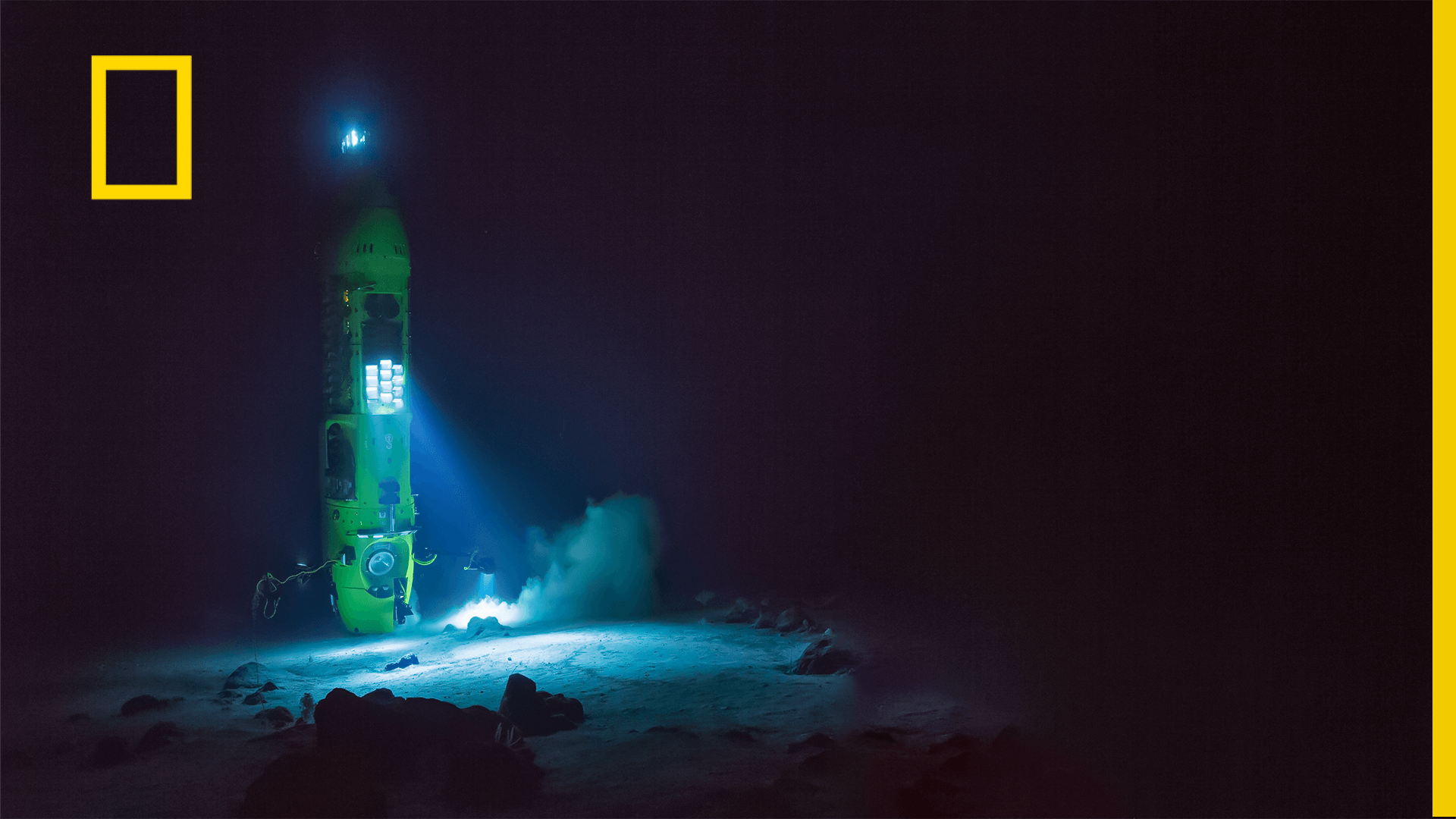
DEEPER THAN EVEREST’S PEAK
THE LEAST KNOWN AND EXPLORED PLACE ON EARTH
TO ANSWER SCIENCE’S ENDURING QUESTIONS
We know less about the deepest points on our planet than we do about the surface of Mars. The DEEPSEA CHALLENGE team is dedicated to advancing the world’s understanding of our ocean’s vast range of biological and geological phenomena. The historic expedition to the Mariana Trench’s lowest point, the Challenger Deep, which lies 6.83 miles (10.99 kilometers) below the ocean surface, was the first extensive scientific exploration in a manned submersible of the deepest spot on Earth. On March 26, 2012, James Cameron successfully piloted the DEEPSEA CHALLENGER—outfitted for scientific exploration—to the ocean’s deepest point, where he collected samples and documented the experience in the high-resolution 3-D for which he’s known globally.

THE TECHNOLOGY
As with spaceships, deep-sea submersibles must be engineered to accommodate innumerable challenges, including dramatic changes in pressure and temperature and a total absence of sunlight. In the process of meeting these challenges, the DEEPSEA CHALLENGER submersible engineering team has made historic breakthroughs in materials science, incorporated unique approaches to structural engineering, and innovated new ways of imaging through an ultrasmall stereoscopic camera capable of withstanding the pressure at full ocean depth. After reaching the seafloor, the DEEPSEA CHALLENGER was able to explore the bottom for several hours—dramatically longer than the 20 minutes U.S. Navy Lt. Don Walsh and Swiss oceanographer Jacques Piccard were able to spend there during their expedition in the bathyscaphe Trieste on January 23, 1960.

THE SCIENCE
The DEEPSEA CHALLENGER is designed as a science platform. It has the ability to collect rock and sediment samples, as well as biology samples, and is equipped with powerful lights and a suite of wide-field and macro 3-D high-definition cameras for observing fauna alive in their natural habitat and providing context images for all samples taken. Scientists from Scripps Institution of Oceanography, the University of Hawai’i, and the Jet Propulsion Laboratory participated in the mission on the ship, as did other scientists on shore. Their research interests include marine biology and microbiology, astrobiology, and marine geology and geophysics.




